
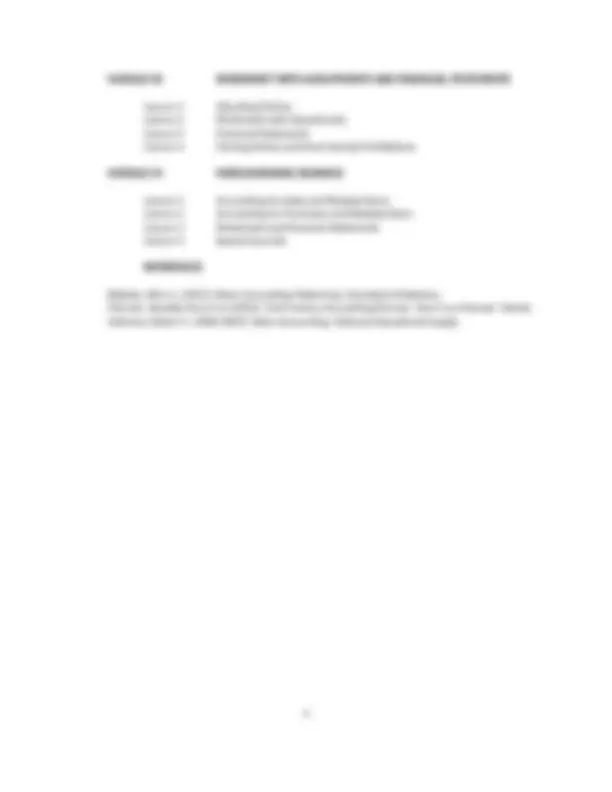
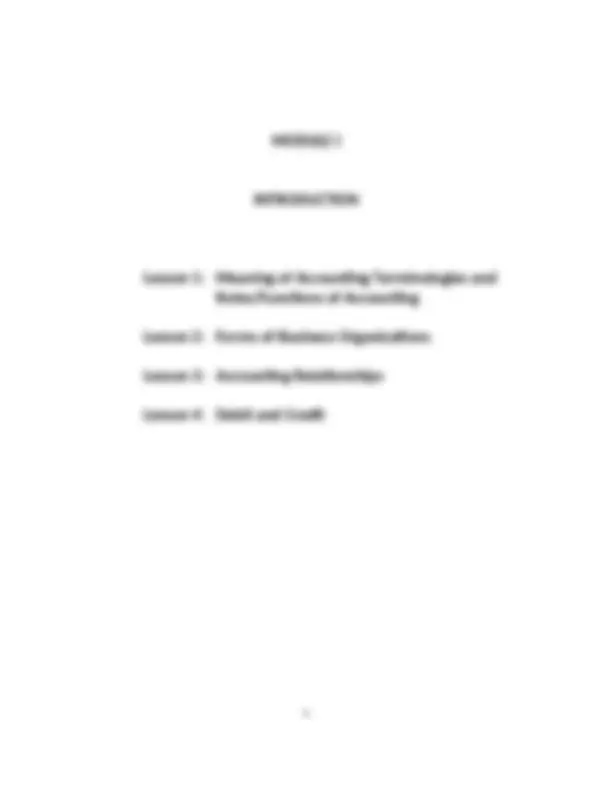
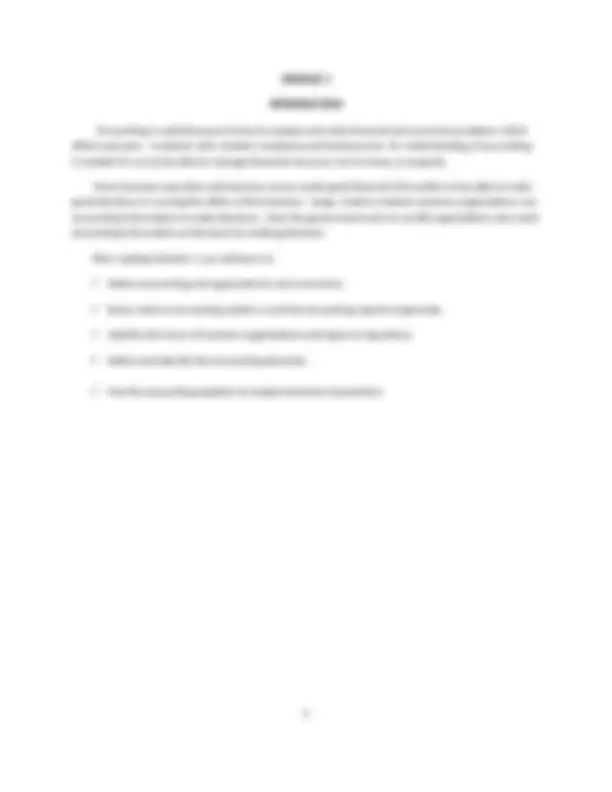
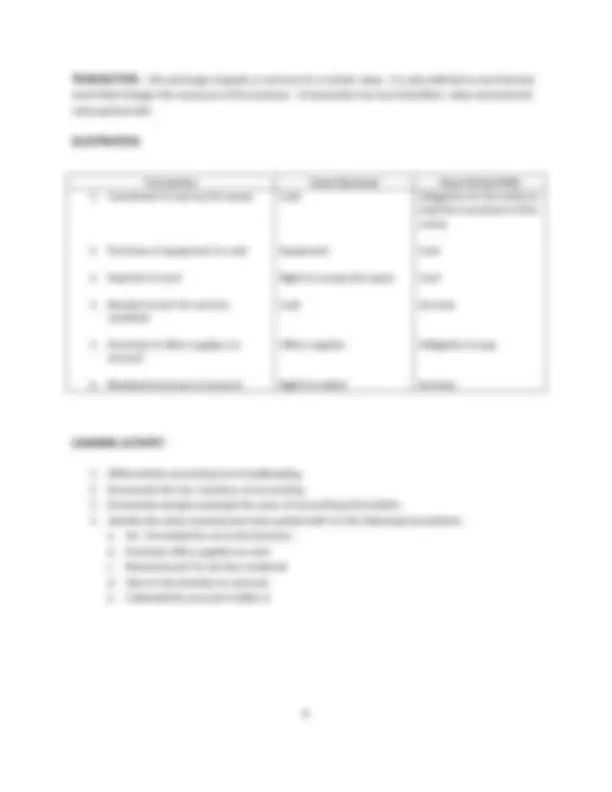
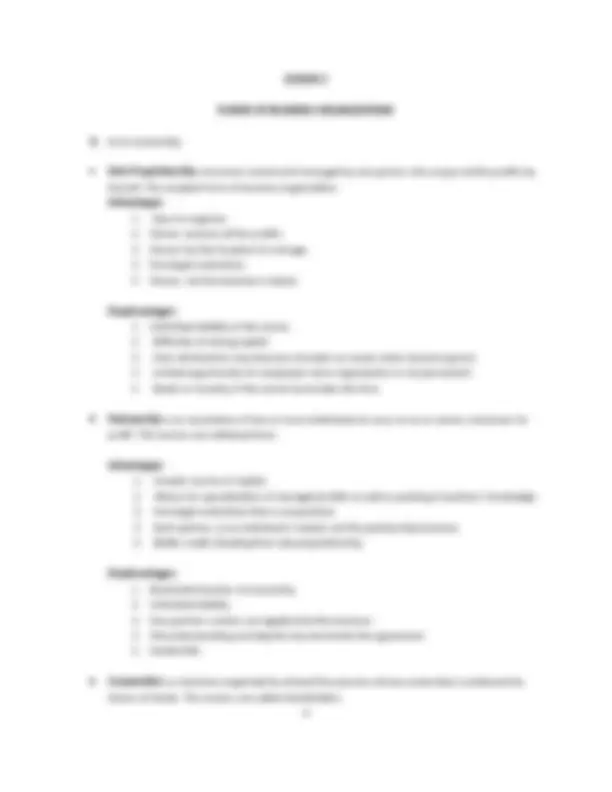
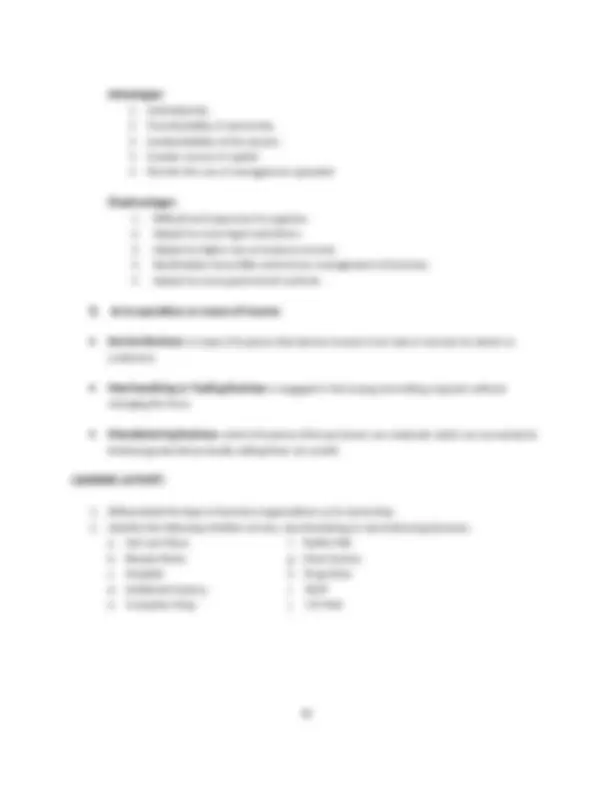
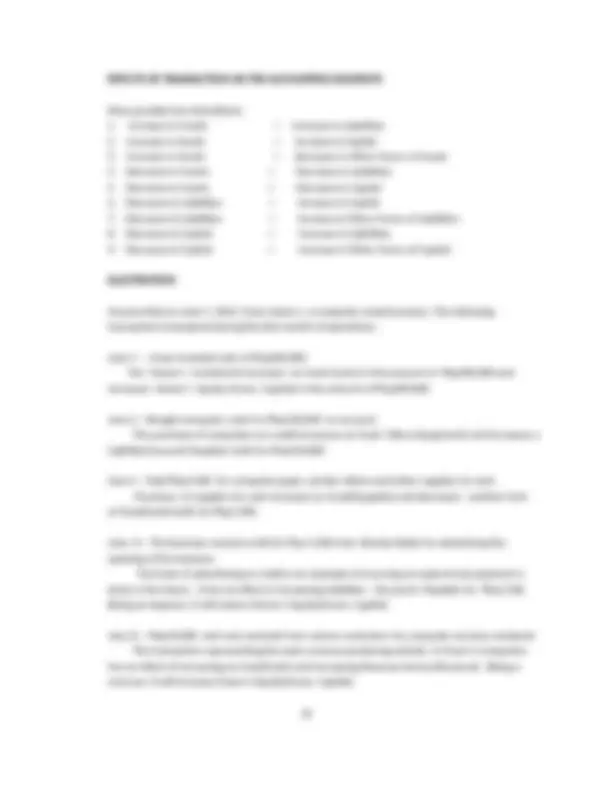
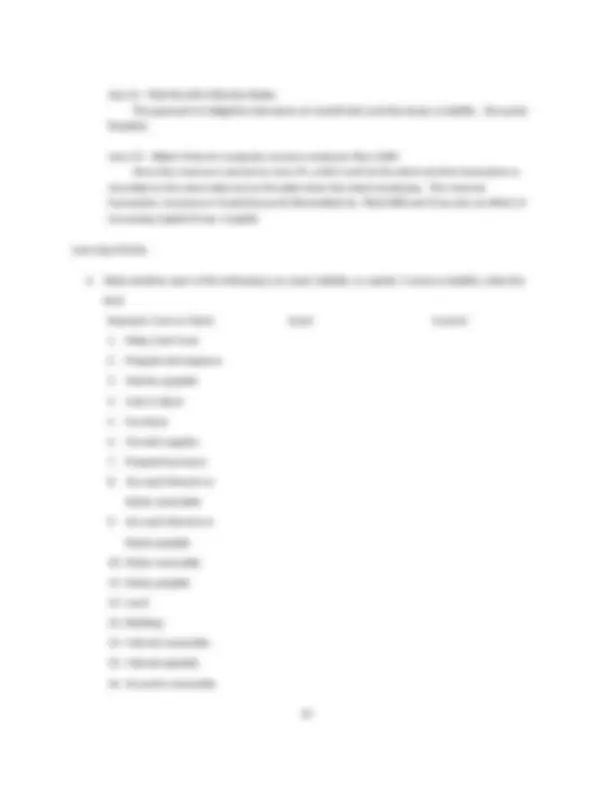
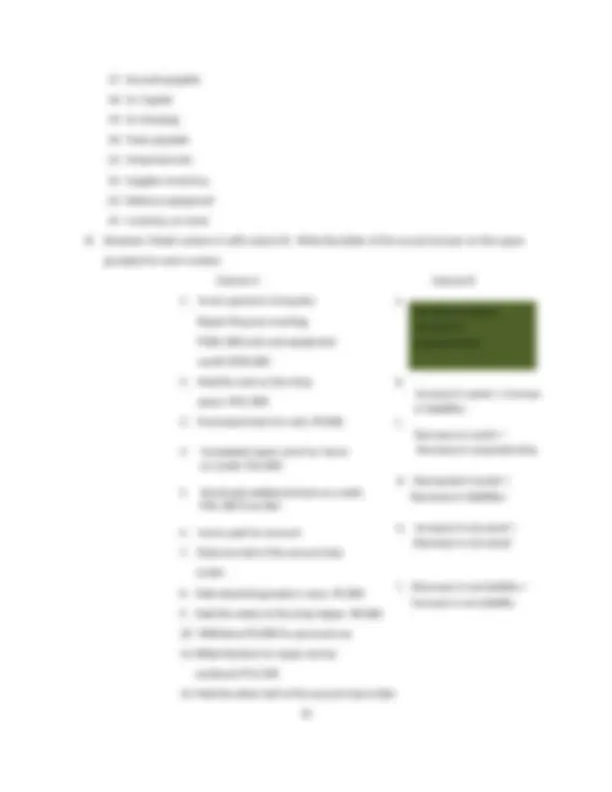
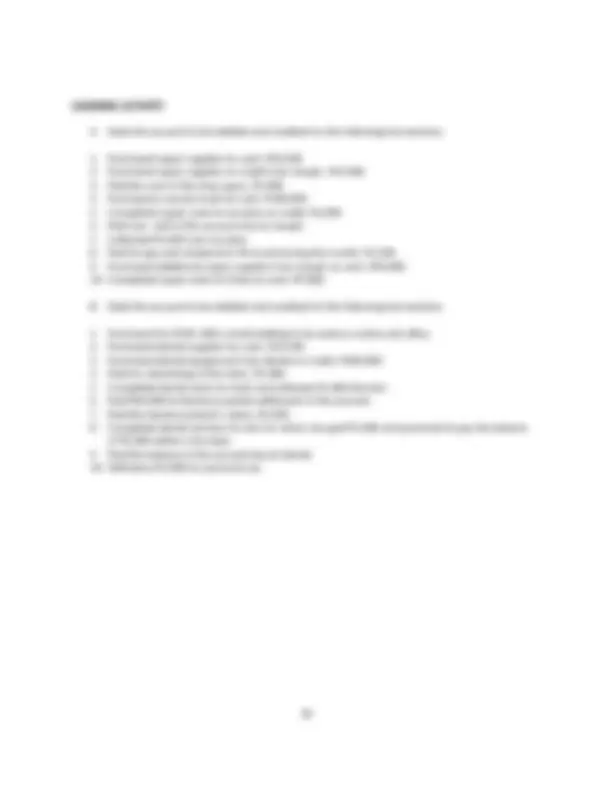
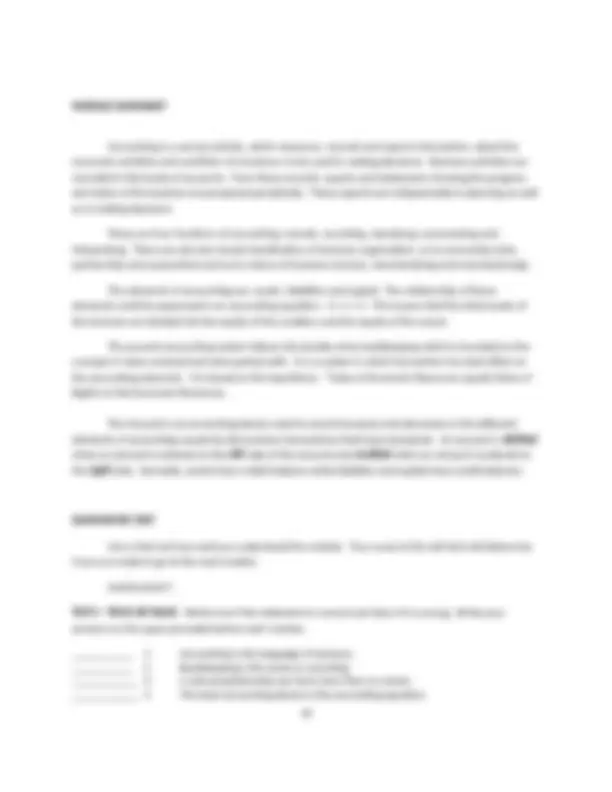
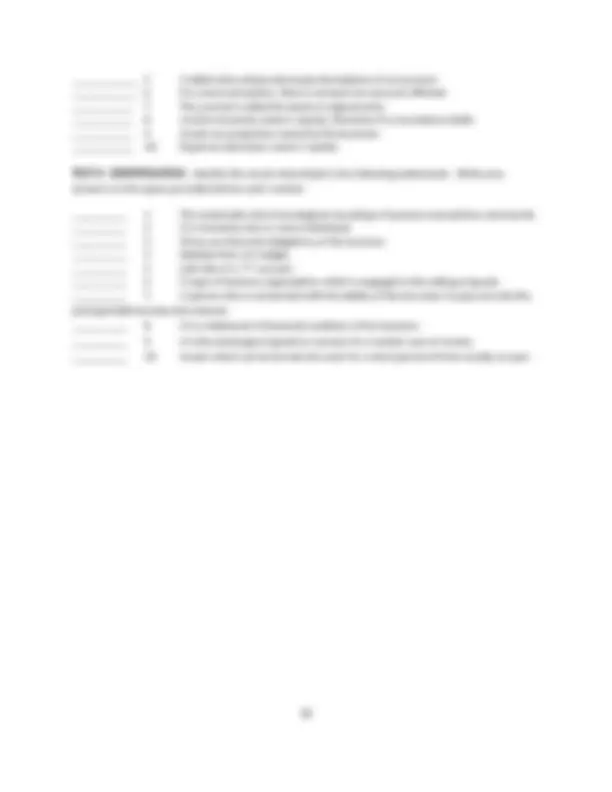

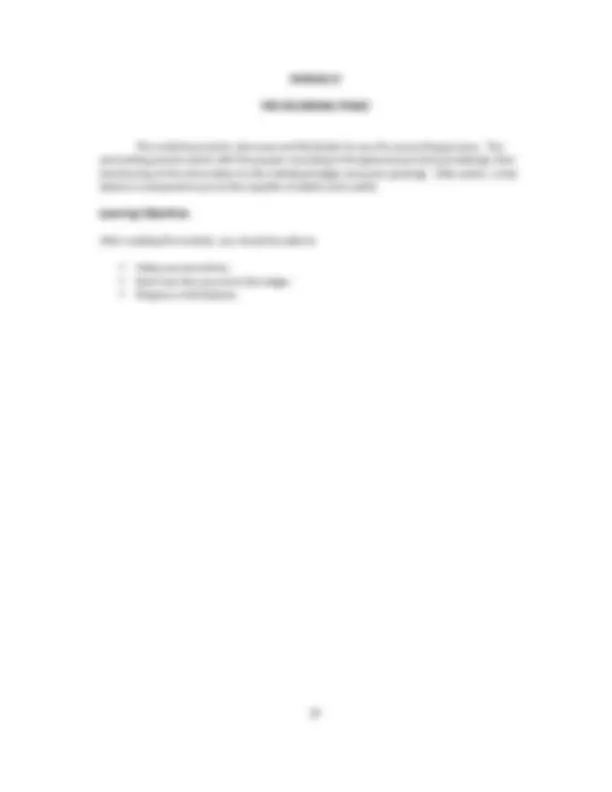
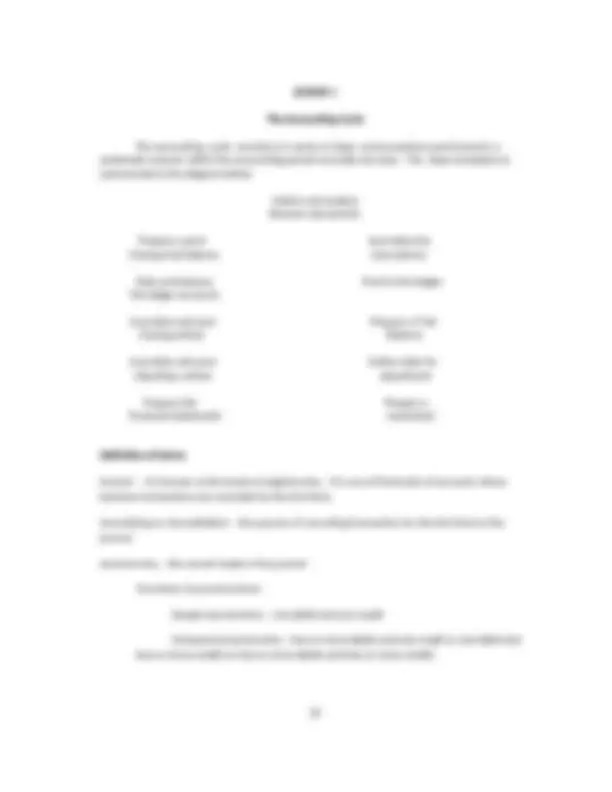
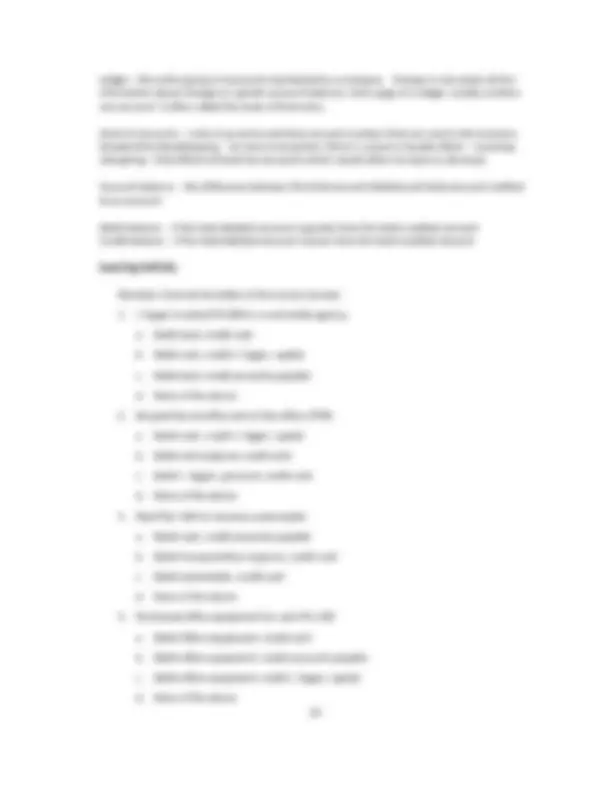
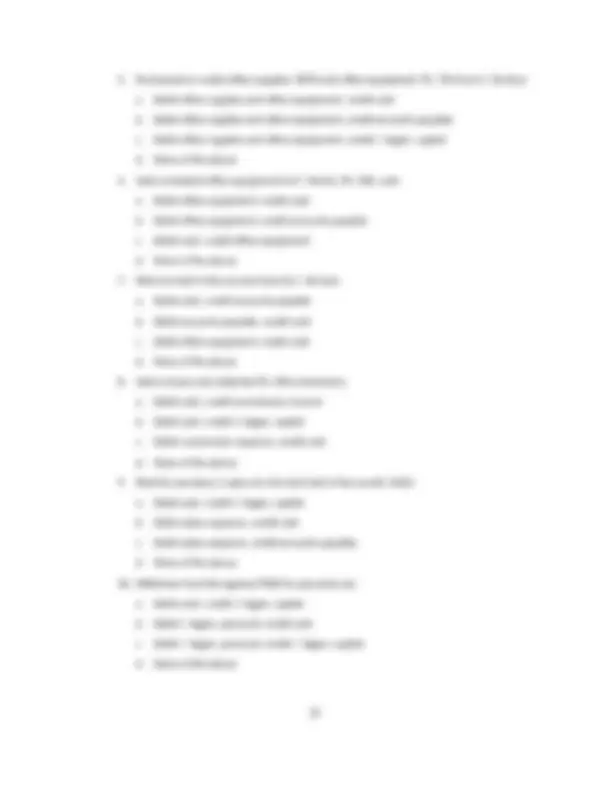
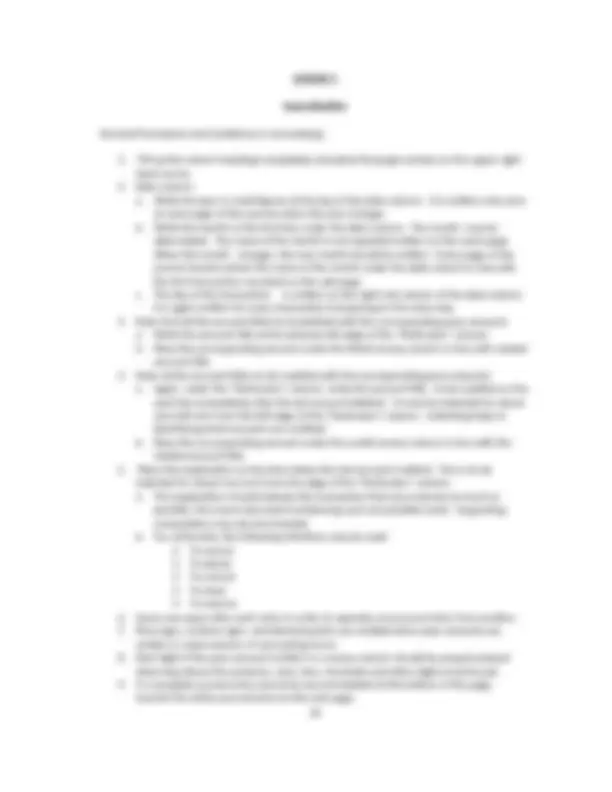
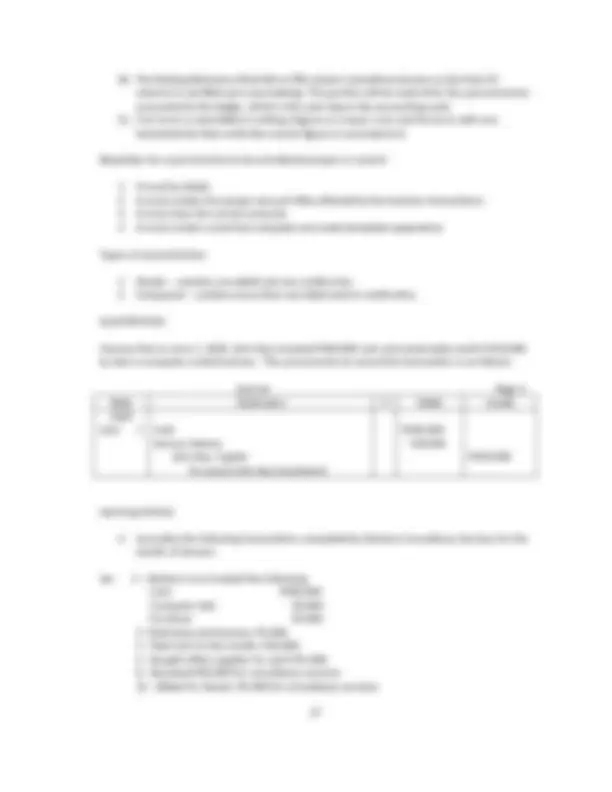
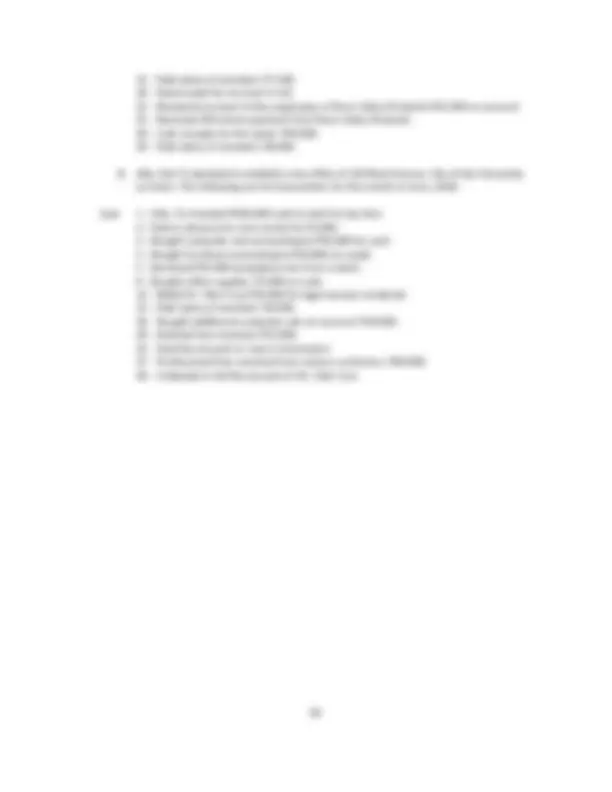
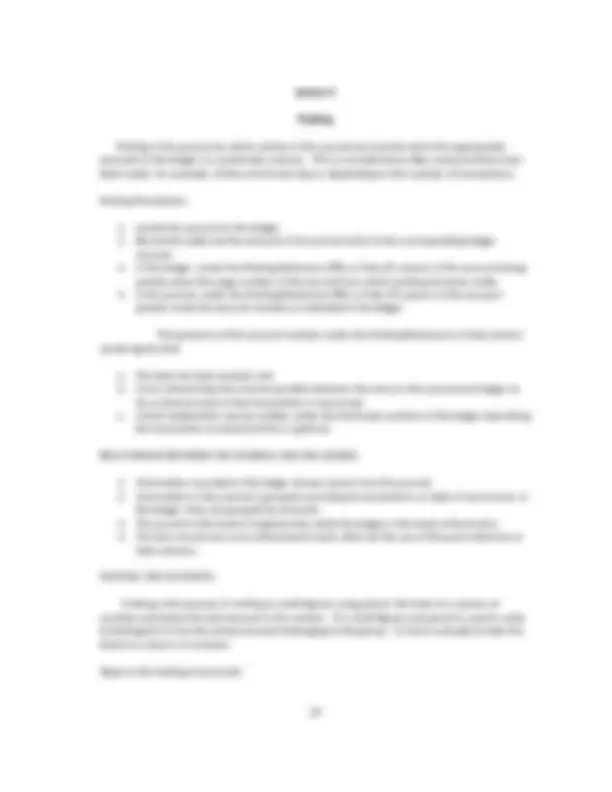
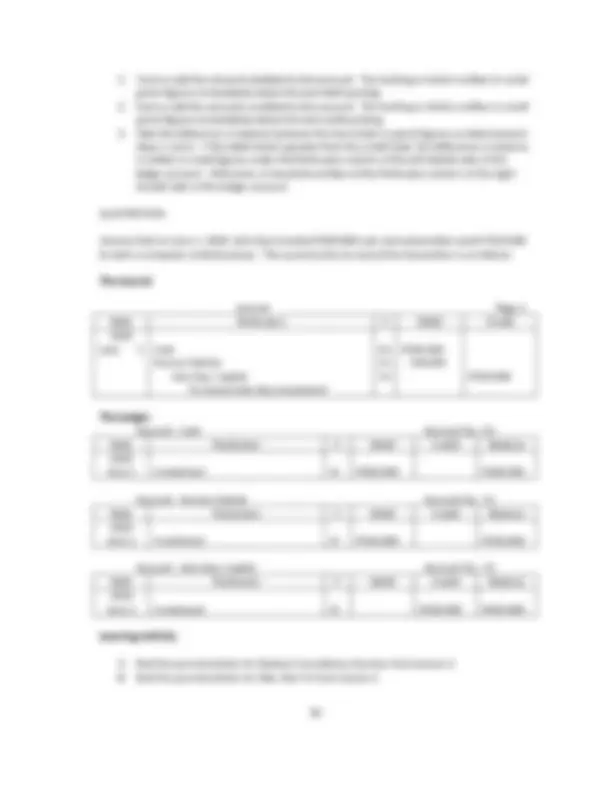
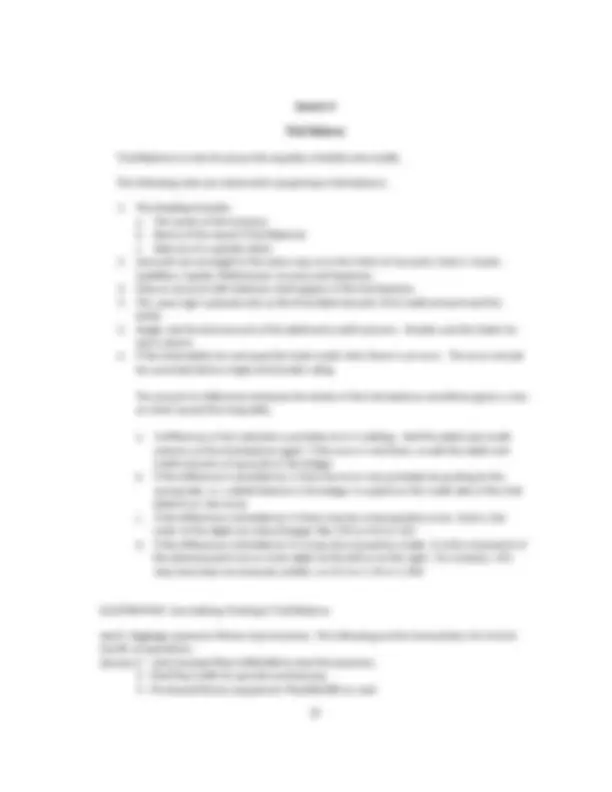
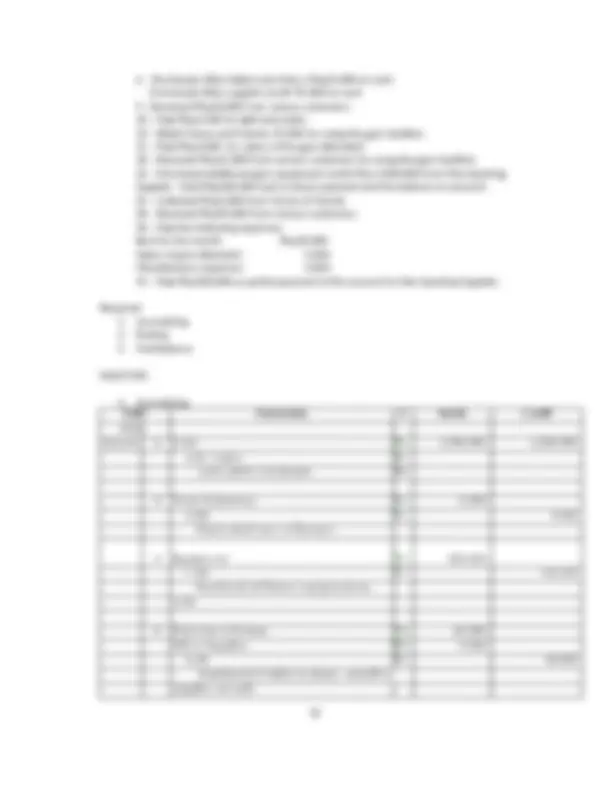

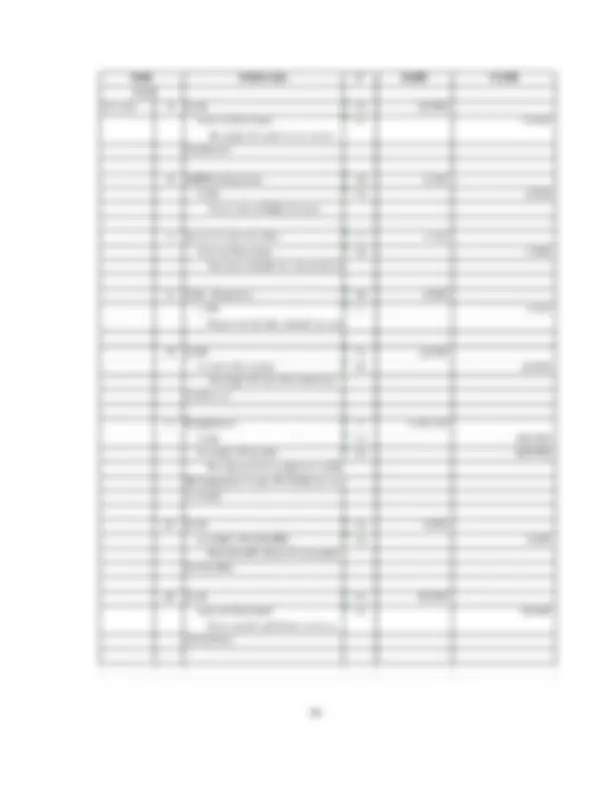
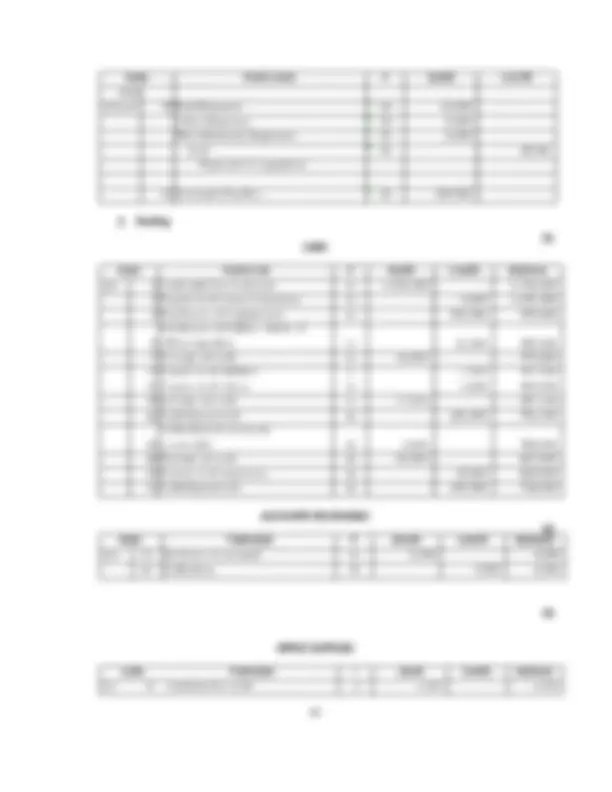
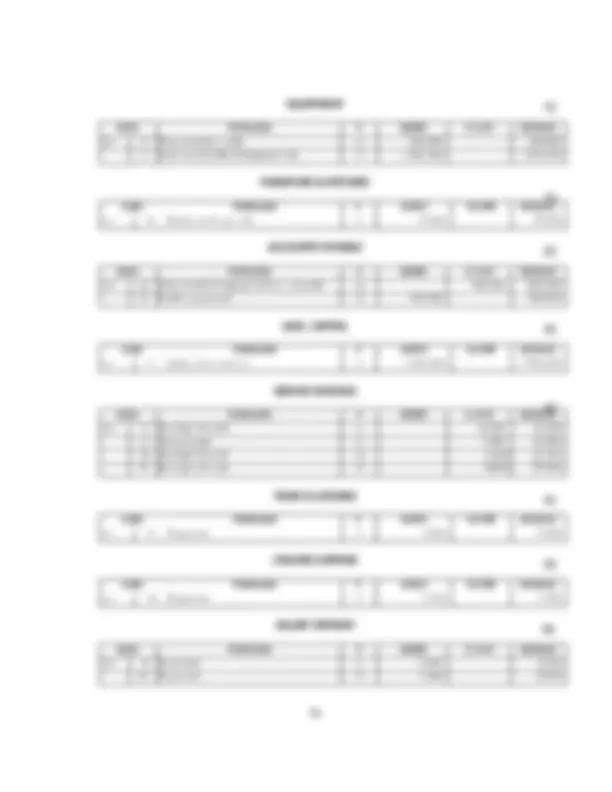
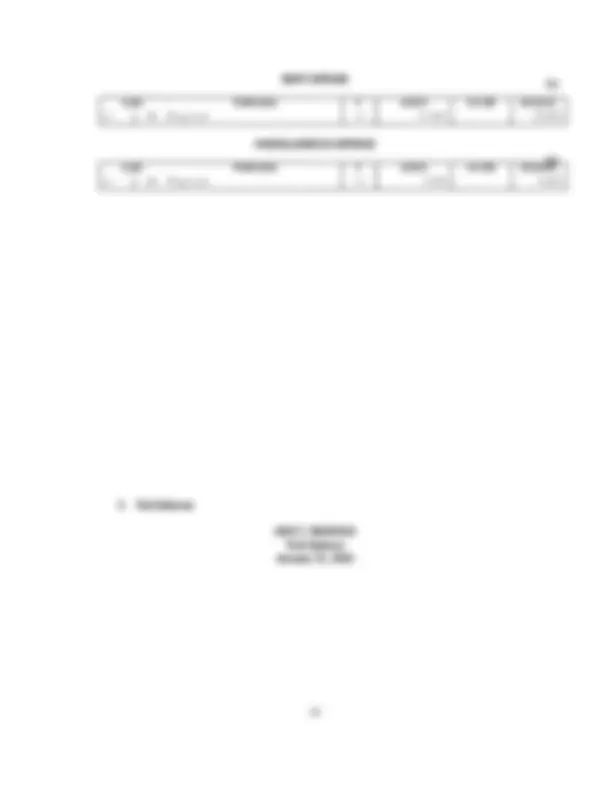
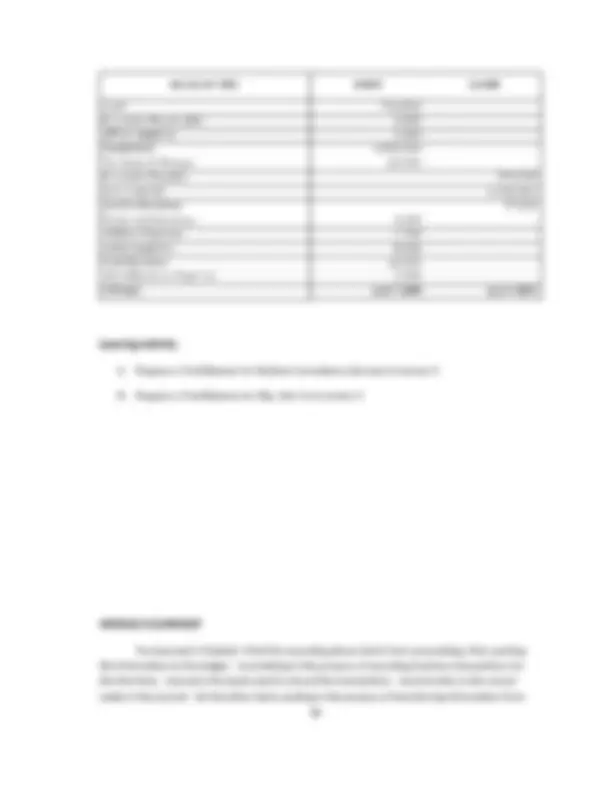
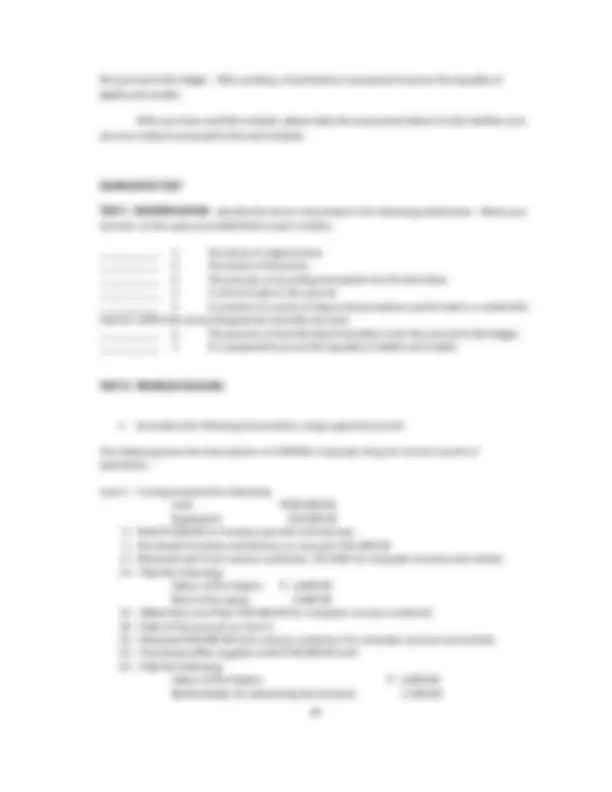

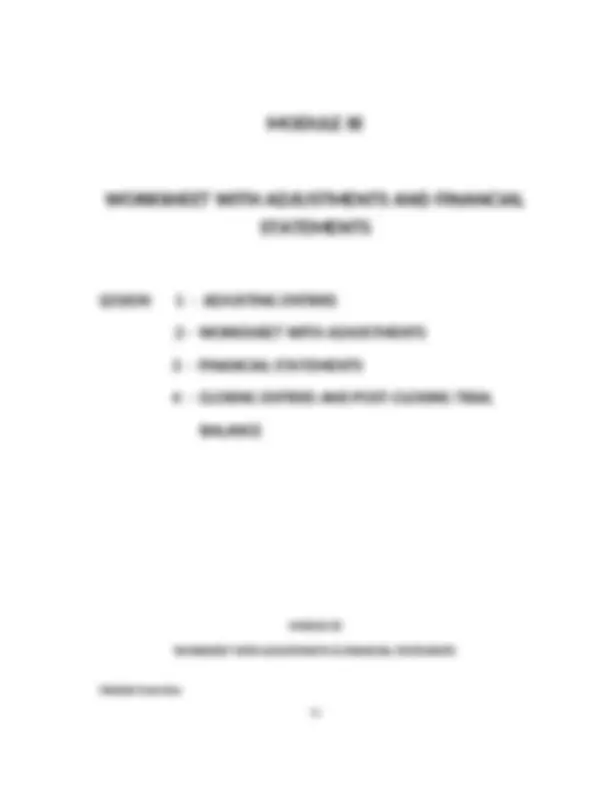

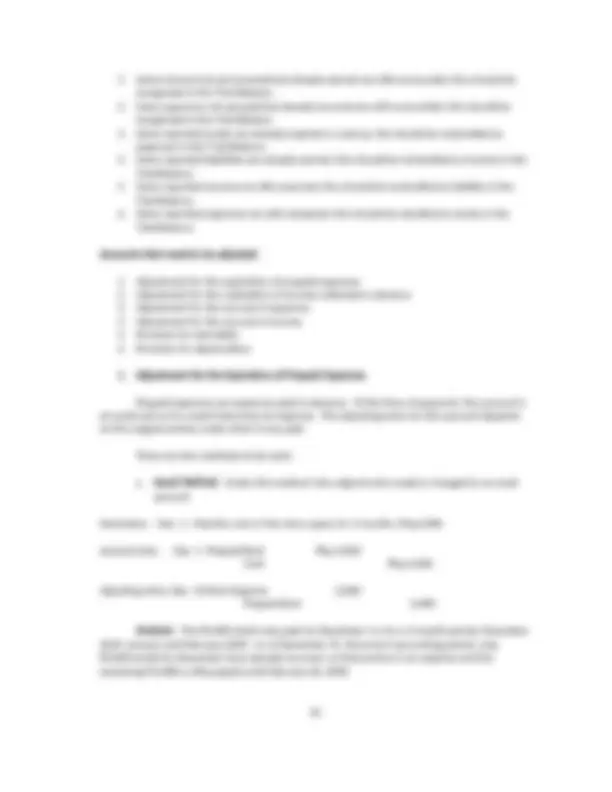
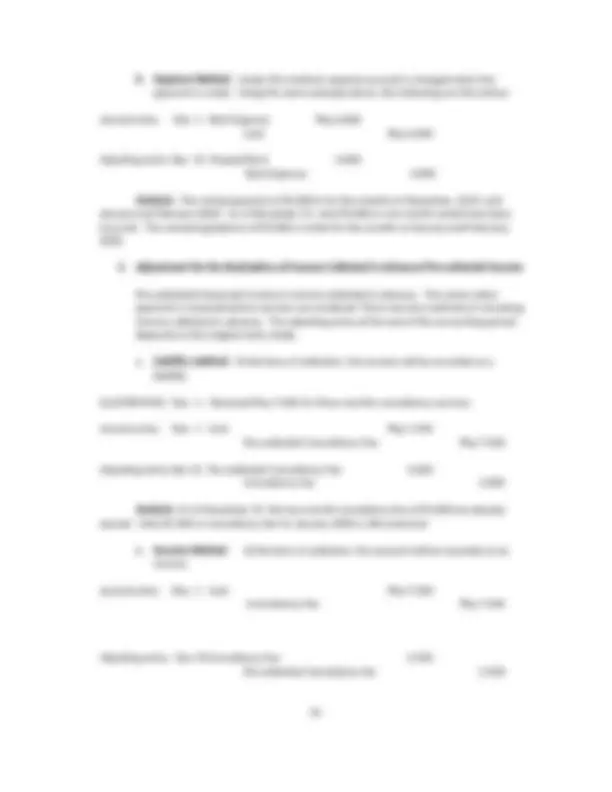
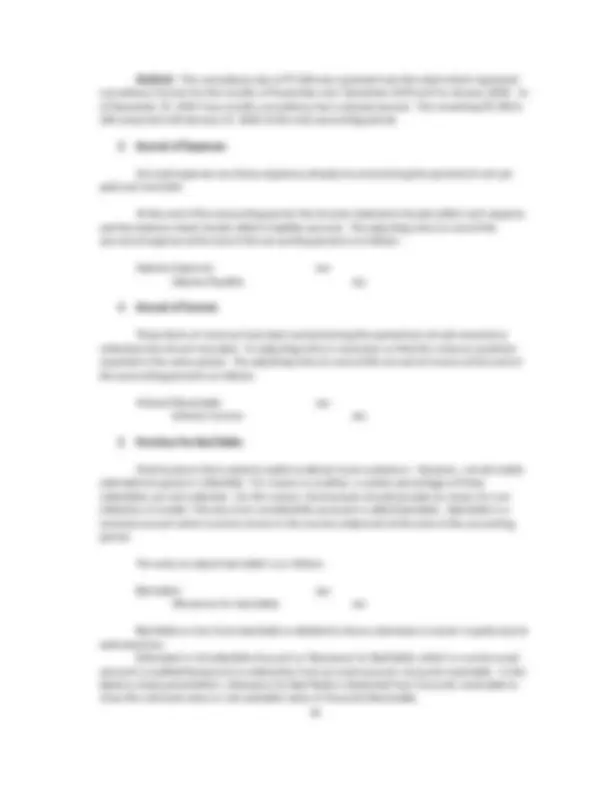
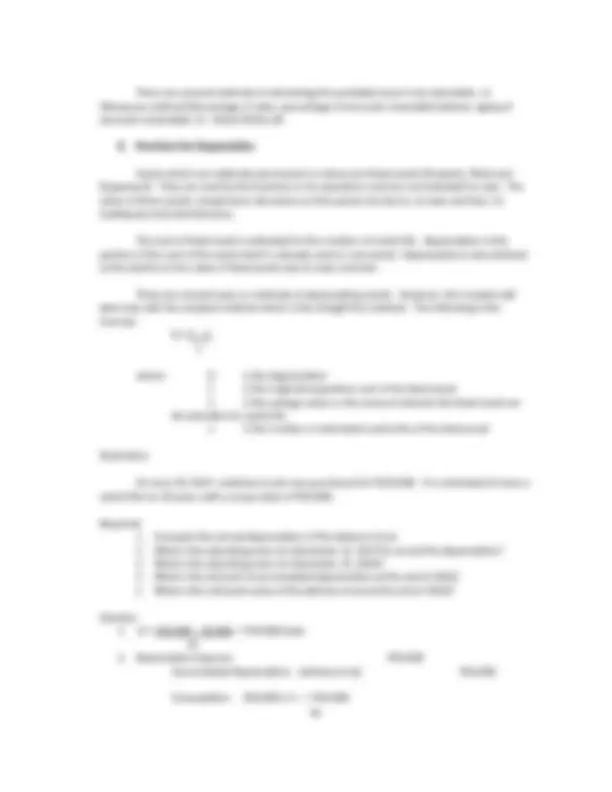
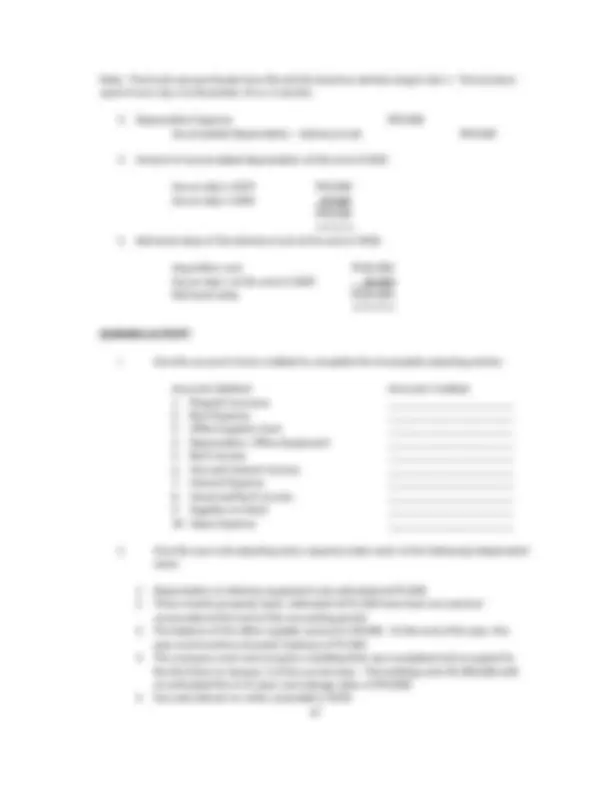
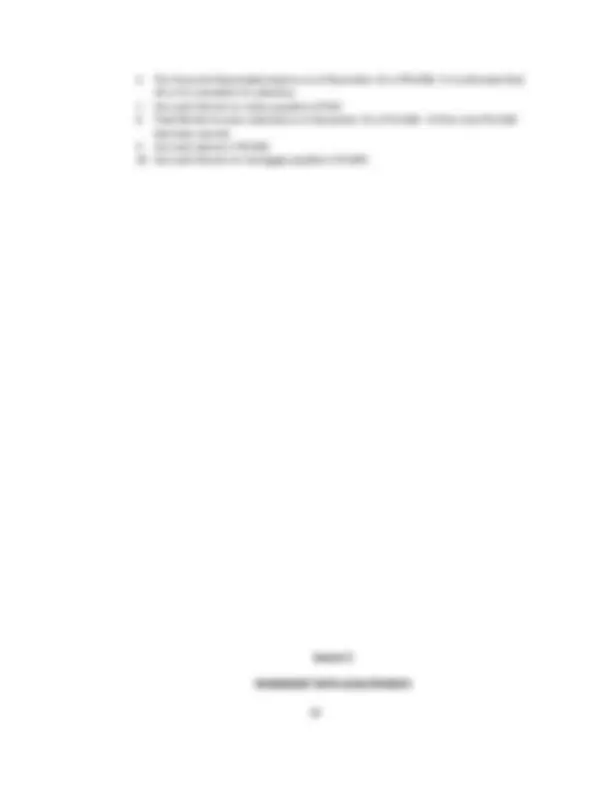
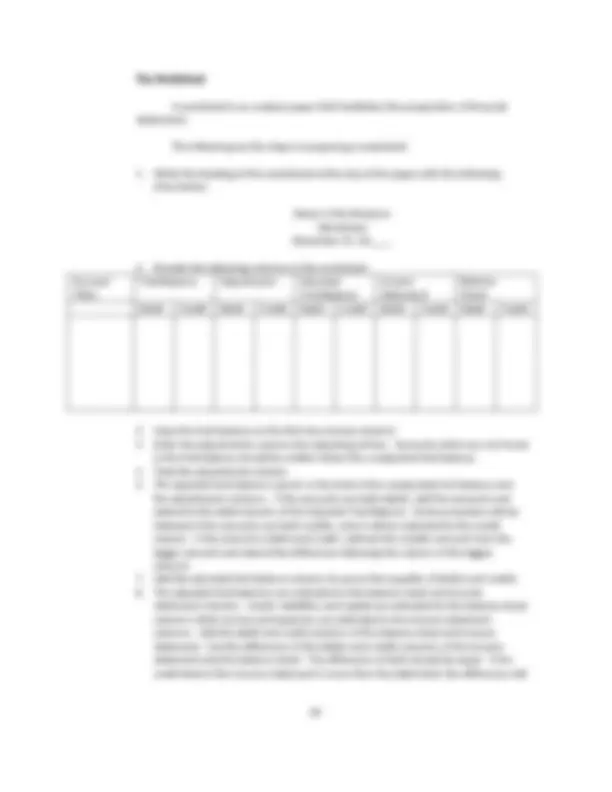
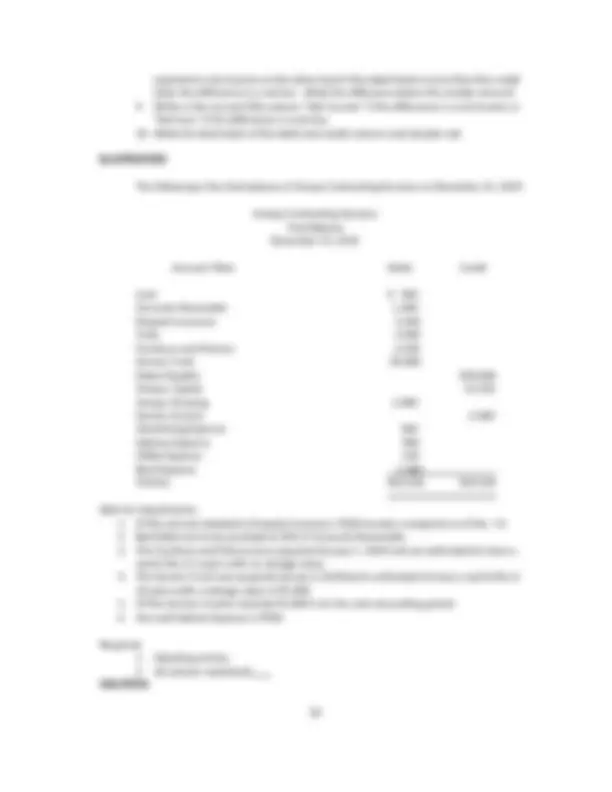
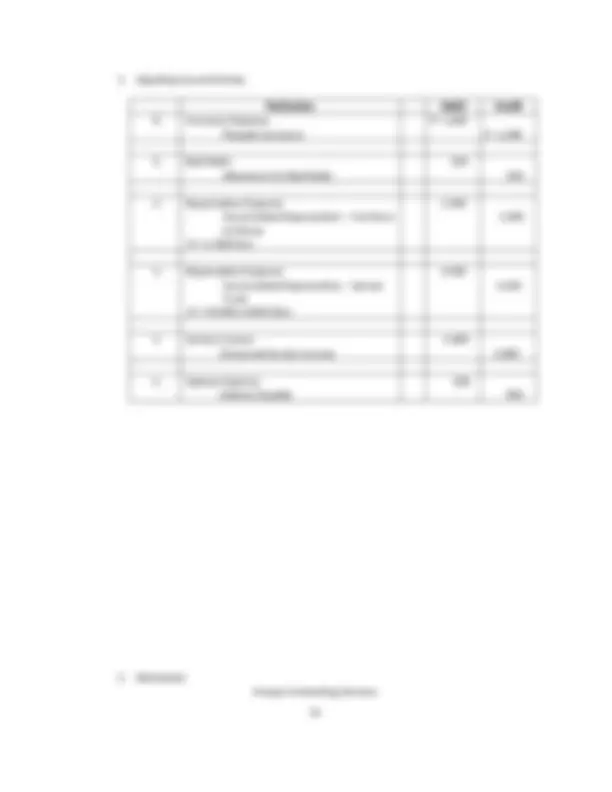
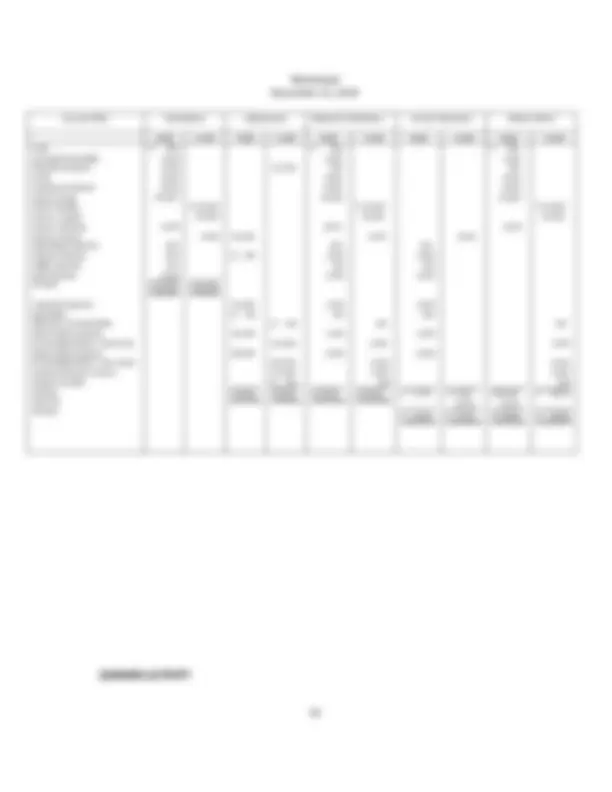
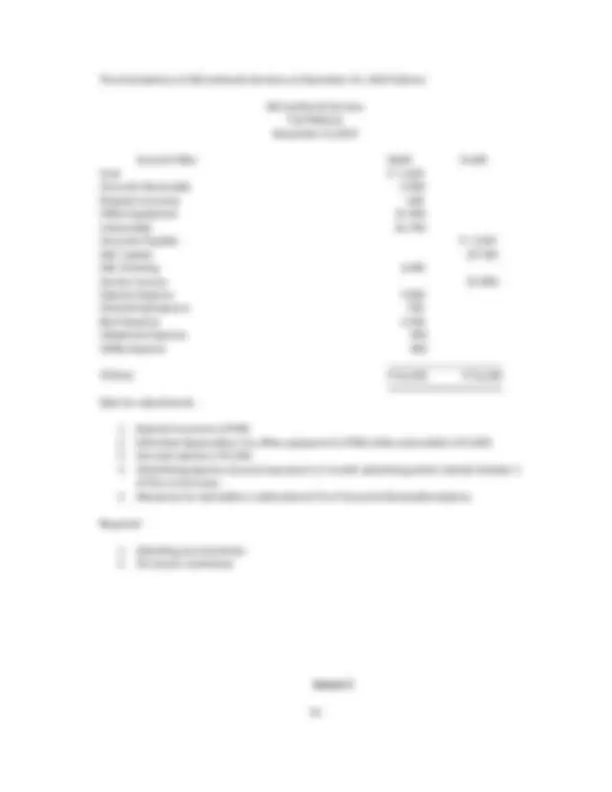
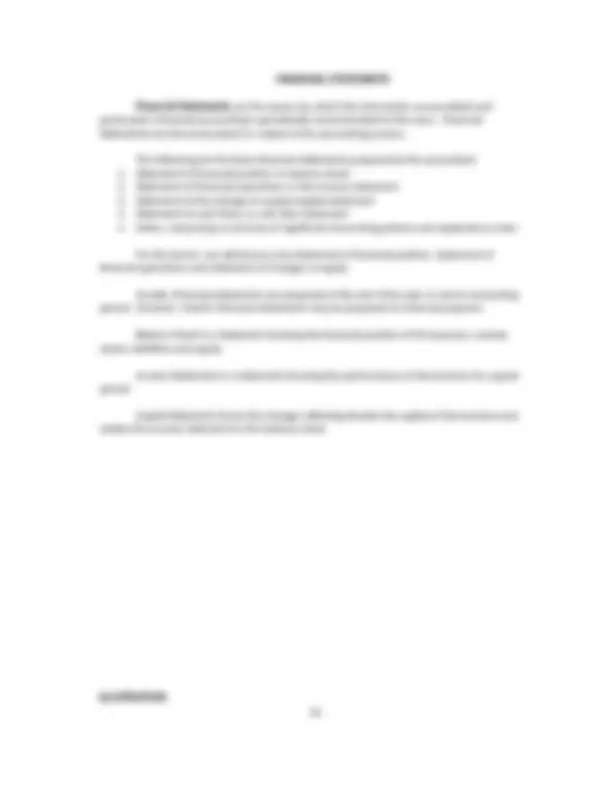
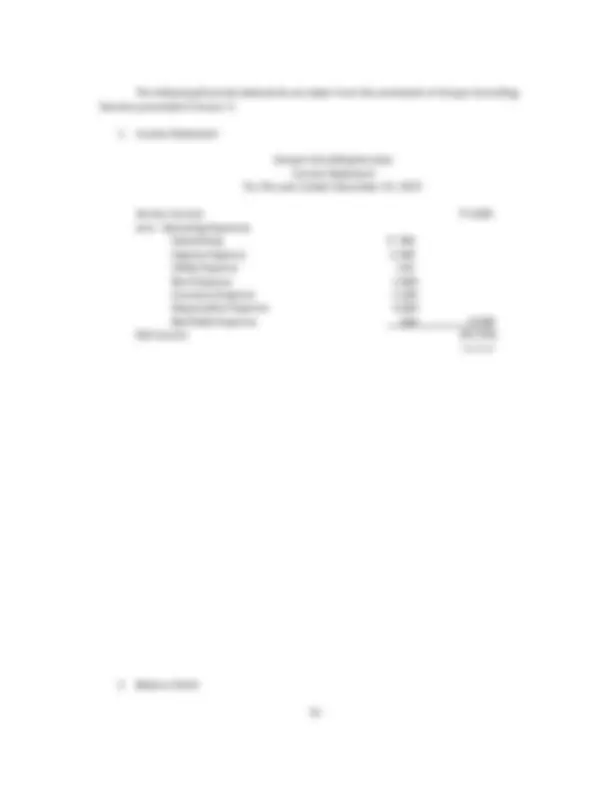
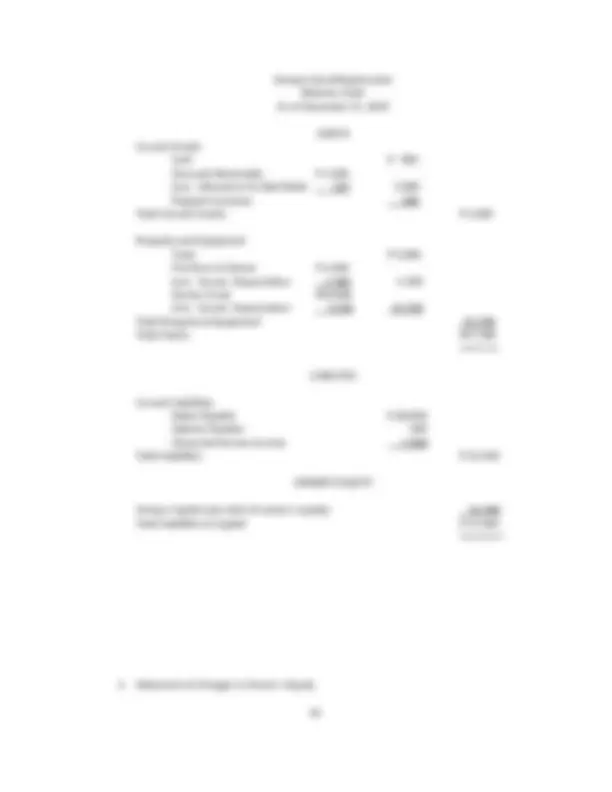
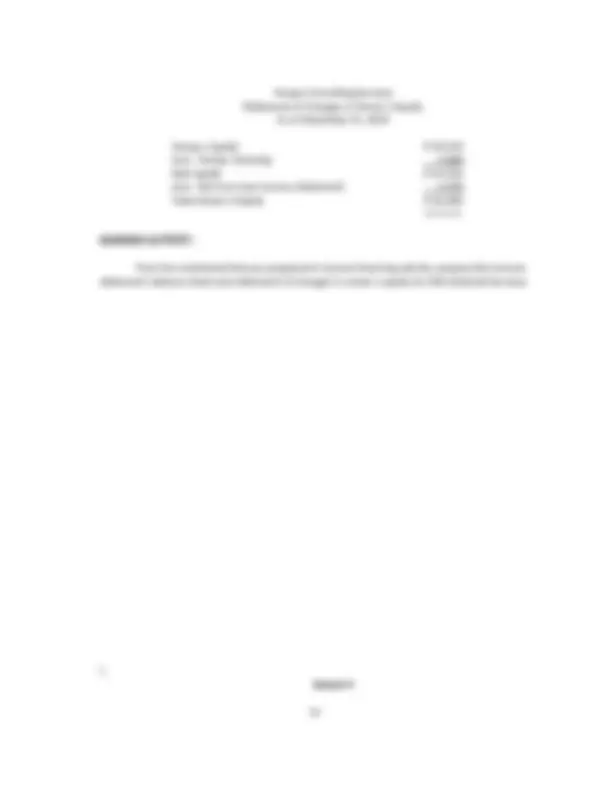
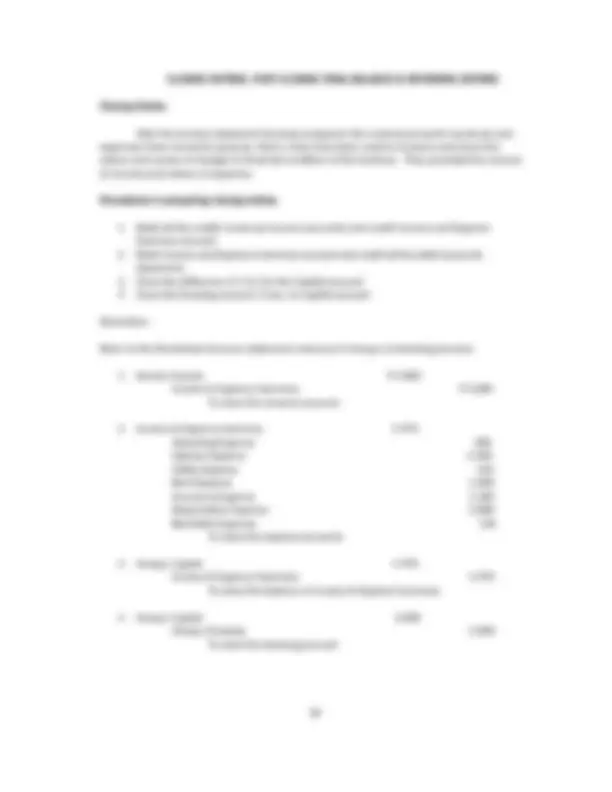
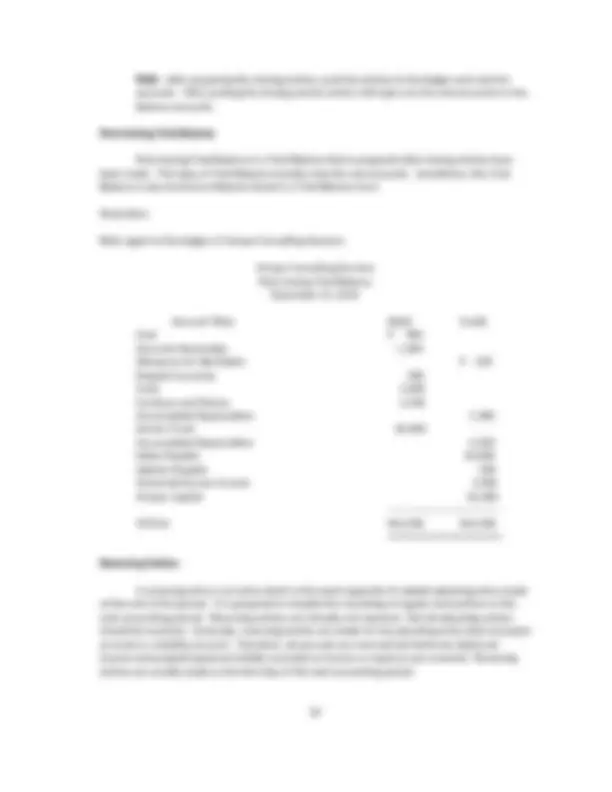
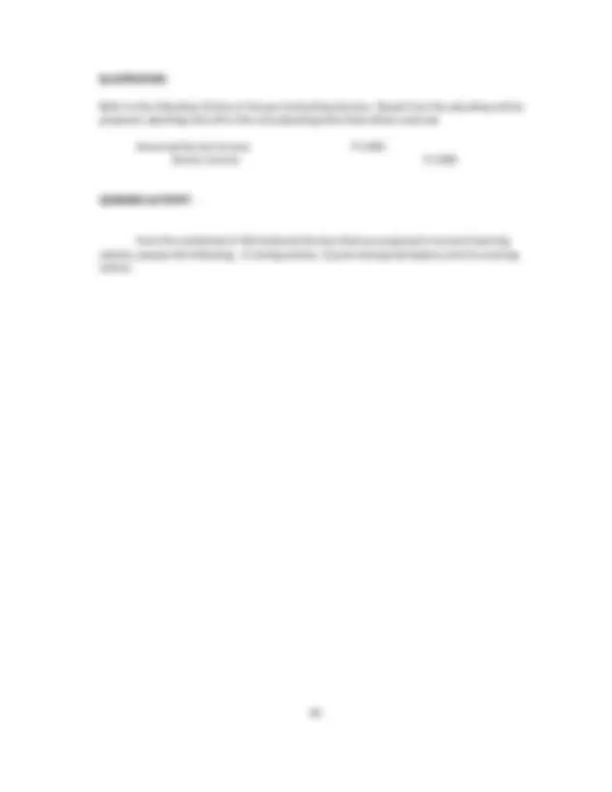
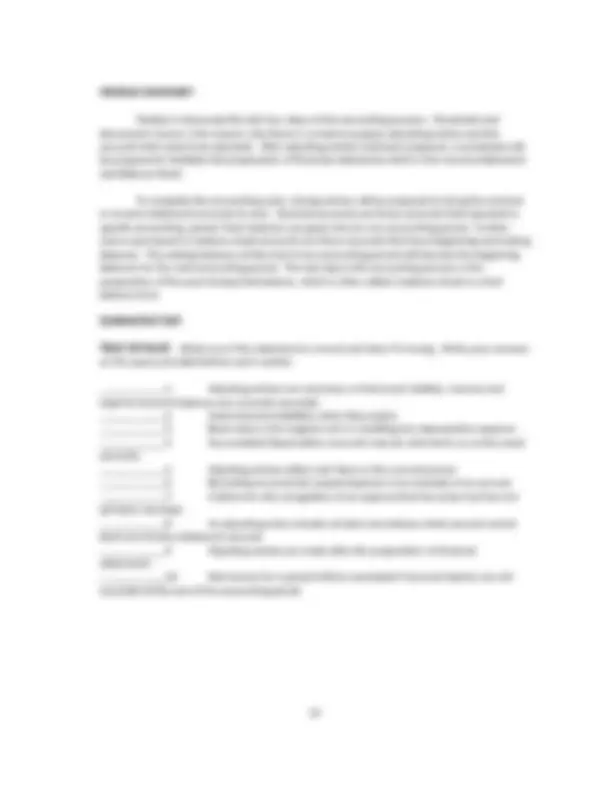
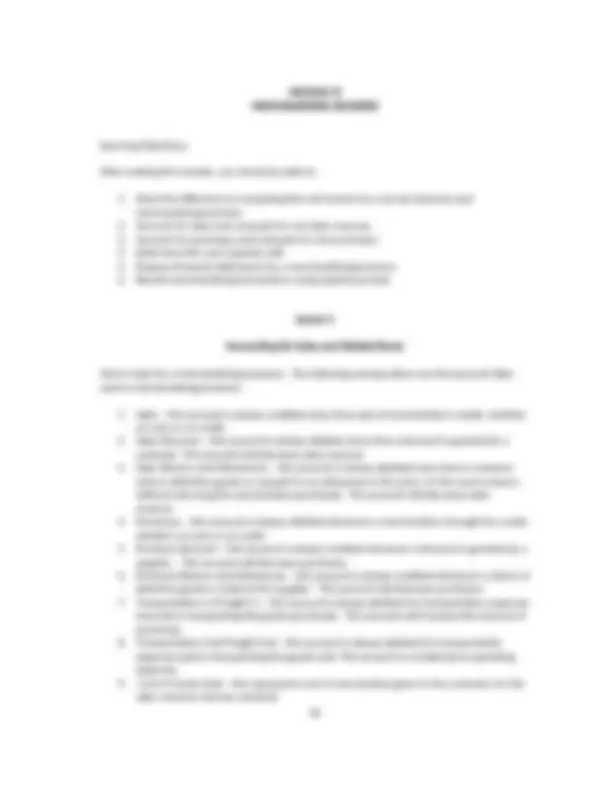
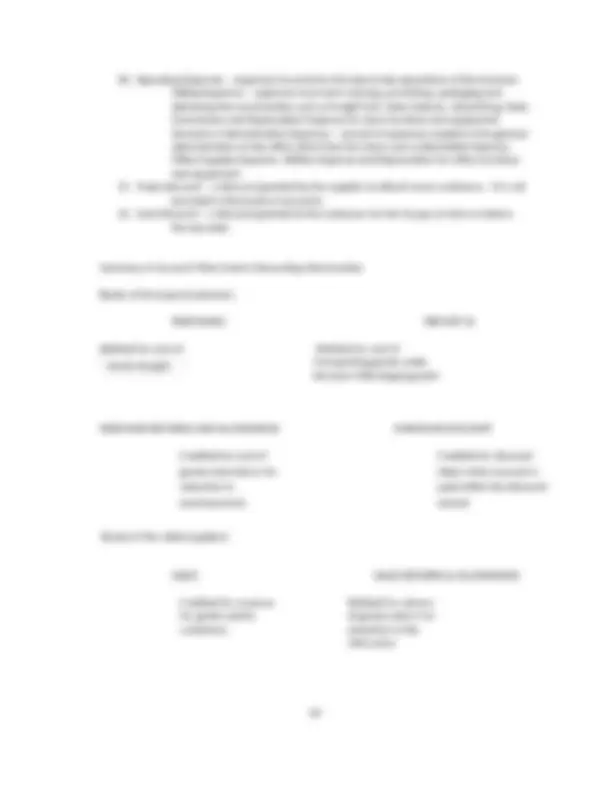
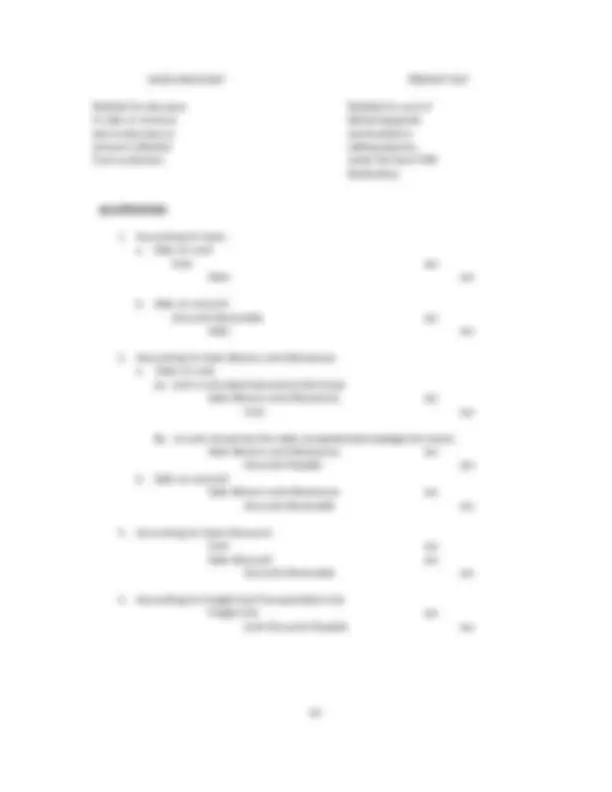
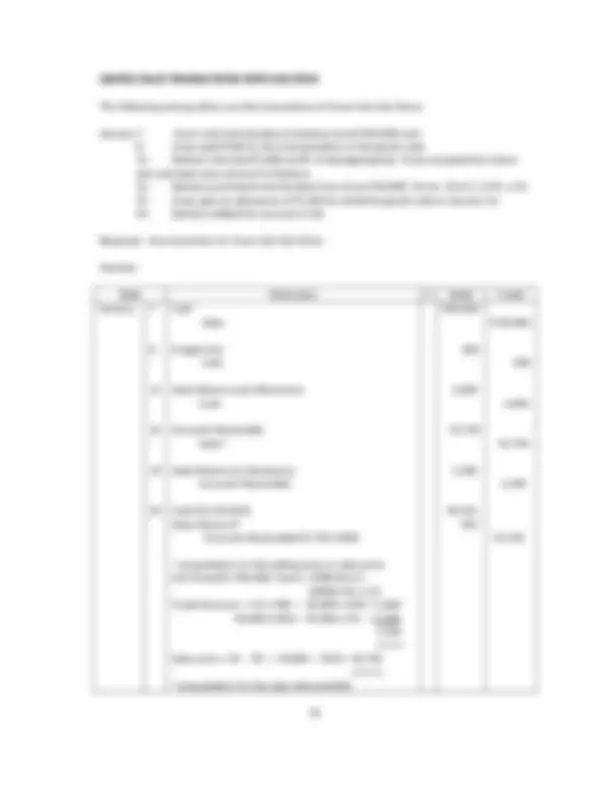
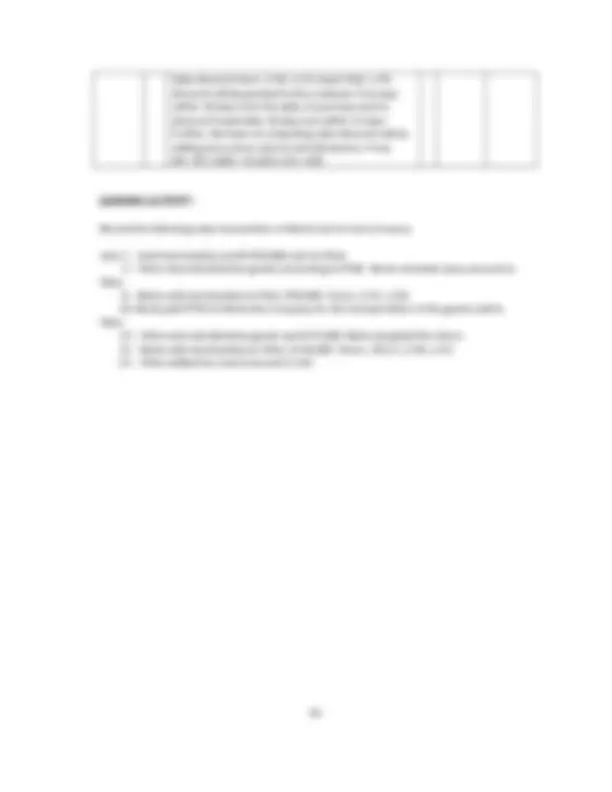
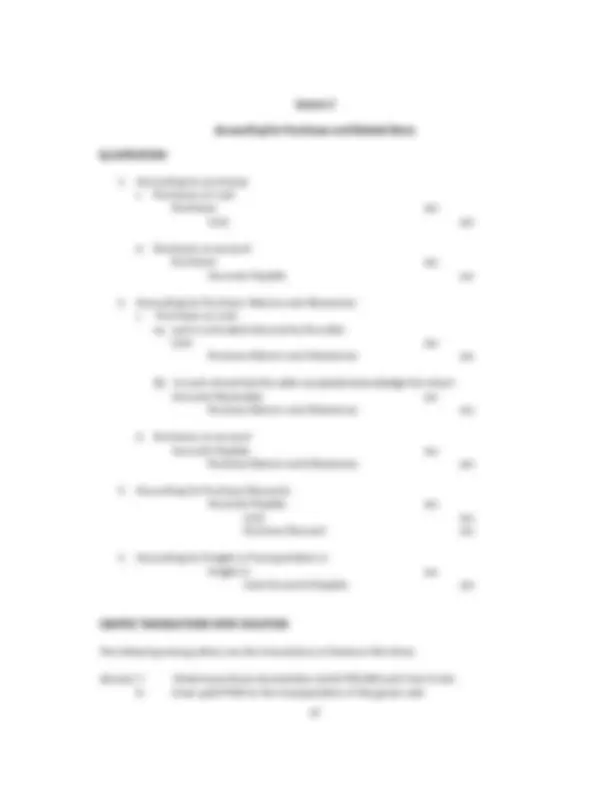
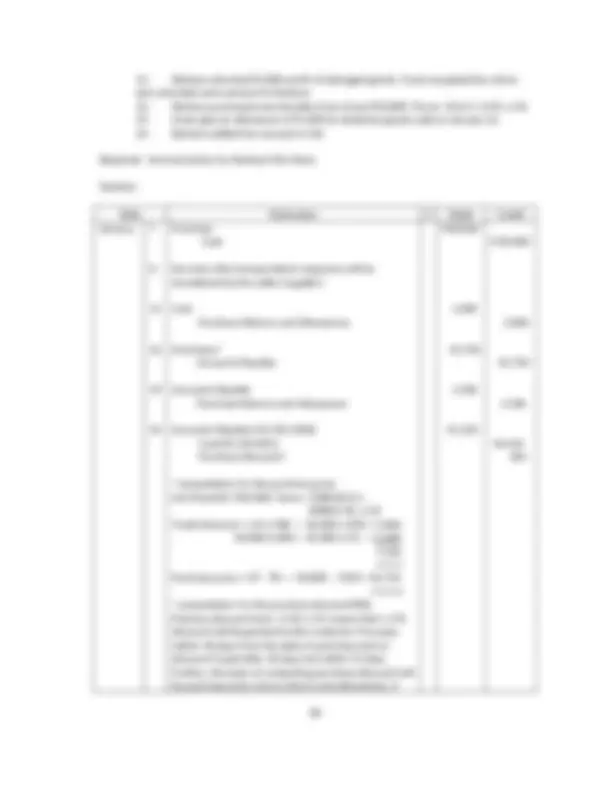
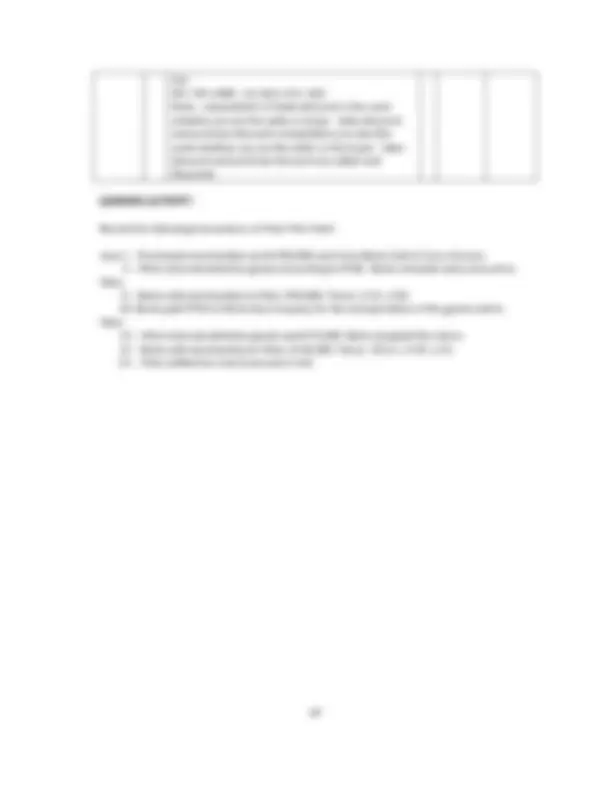
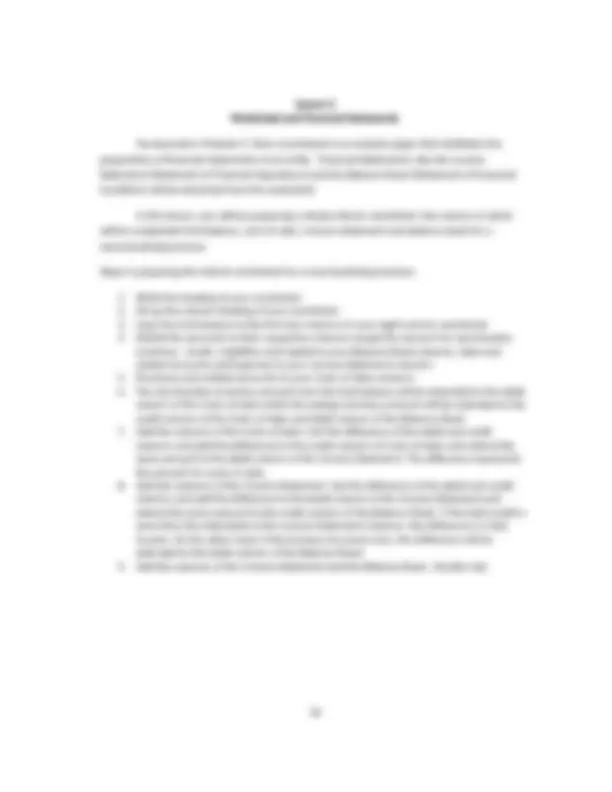
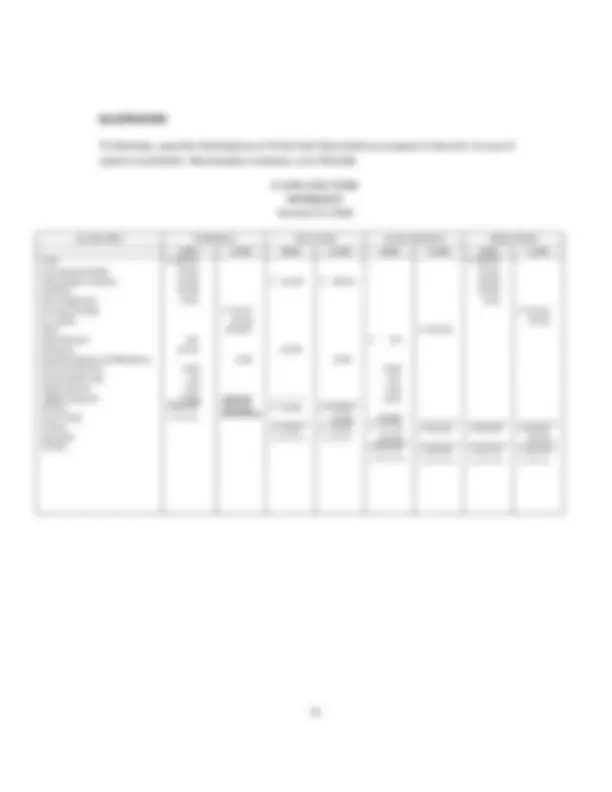
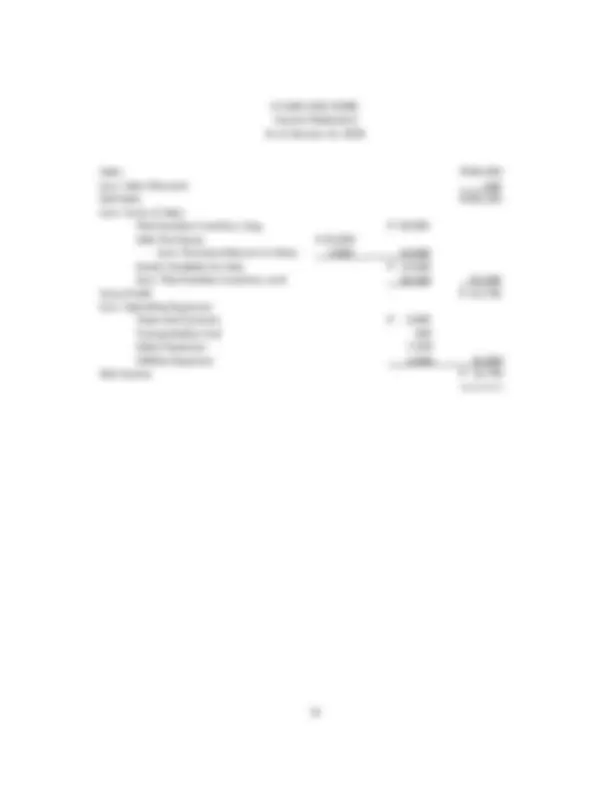
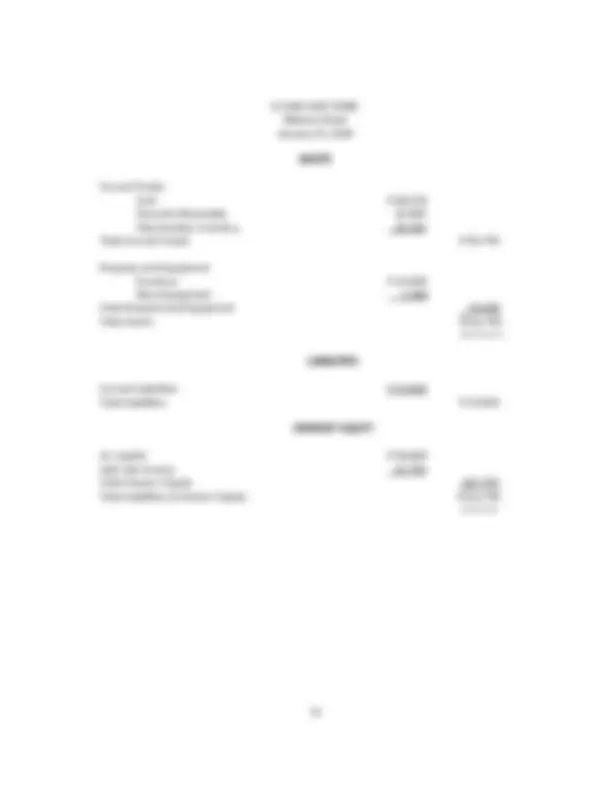
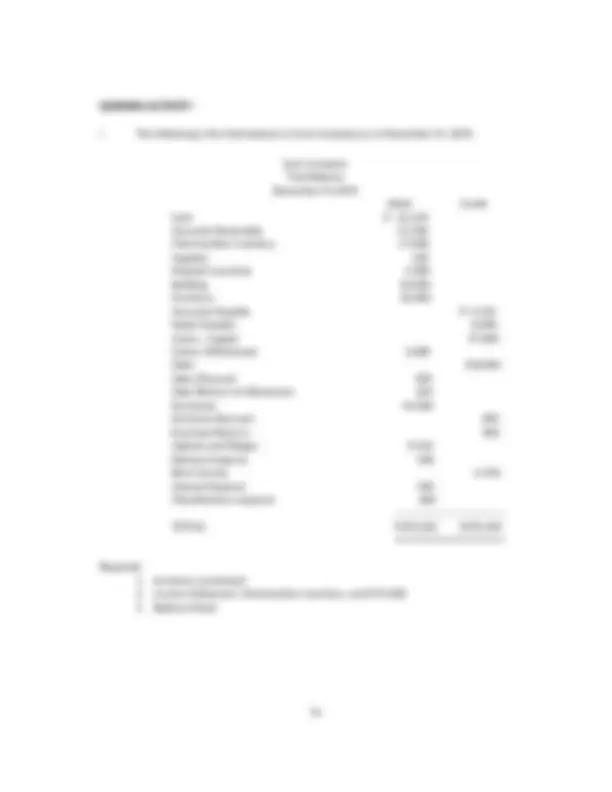
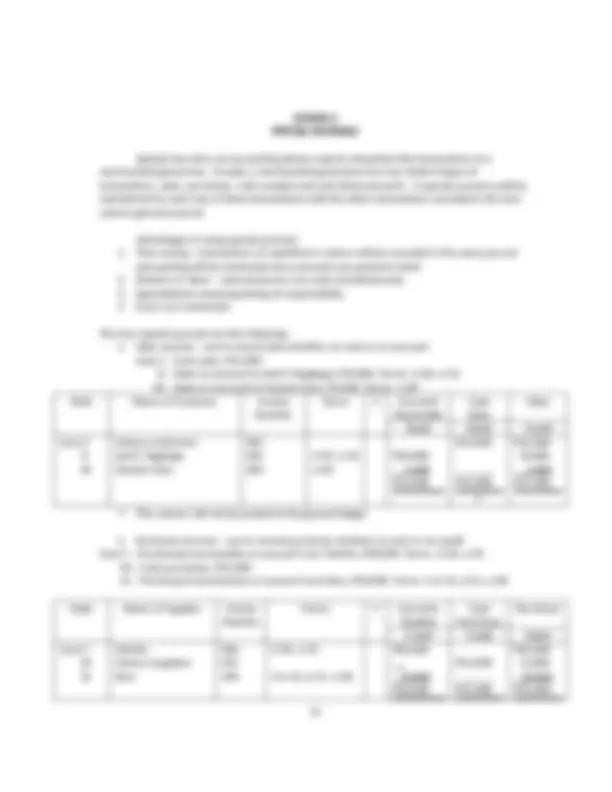
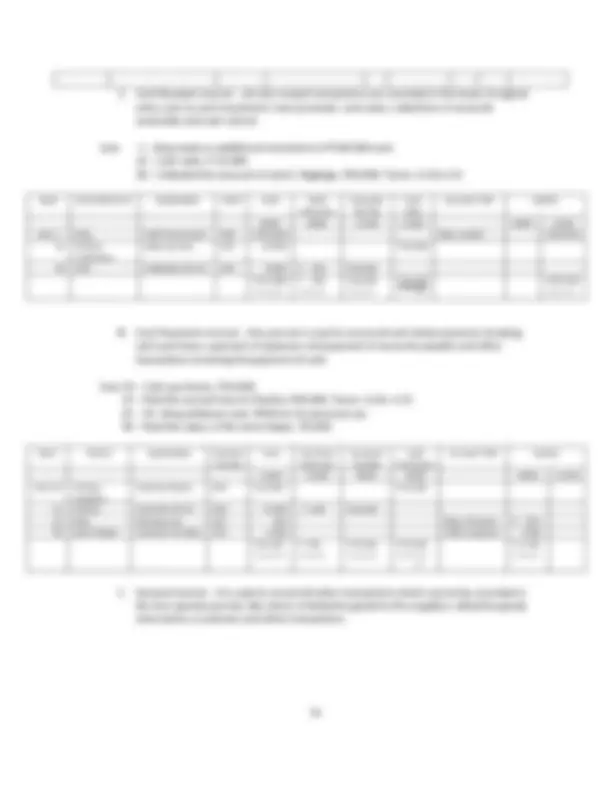
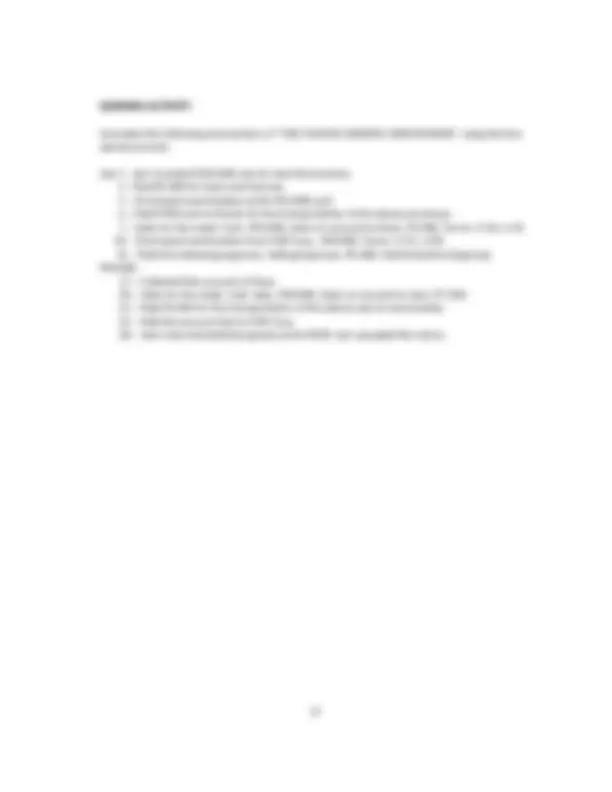
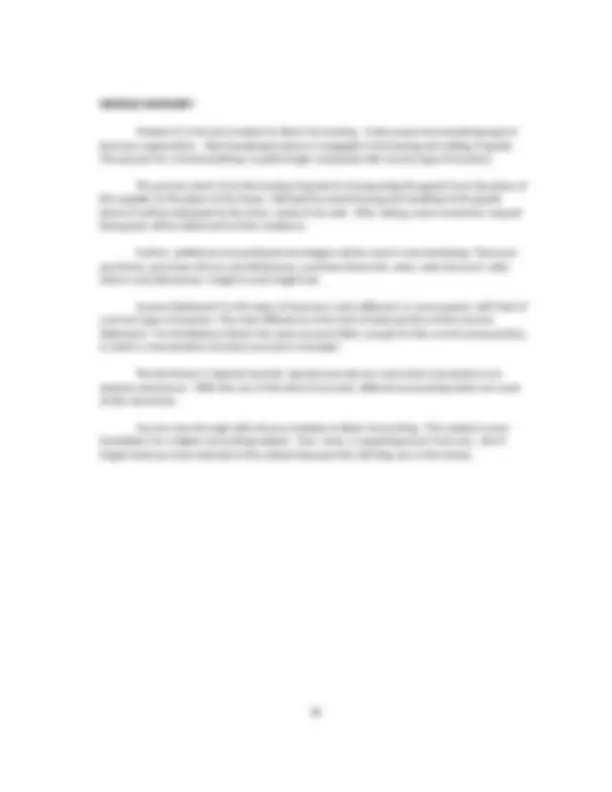
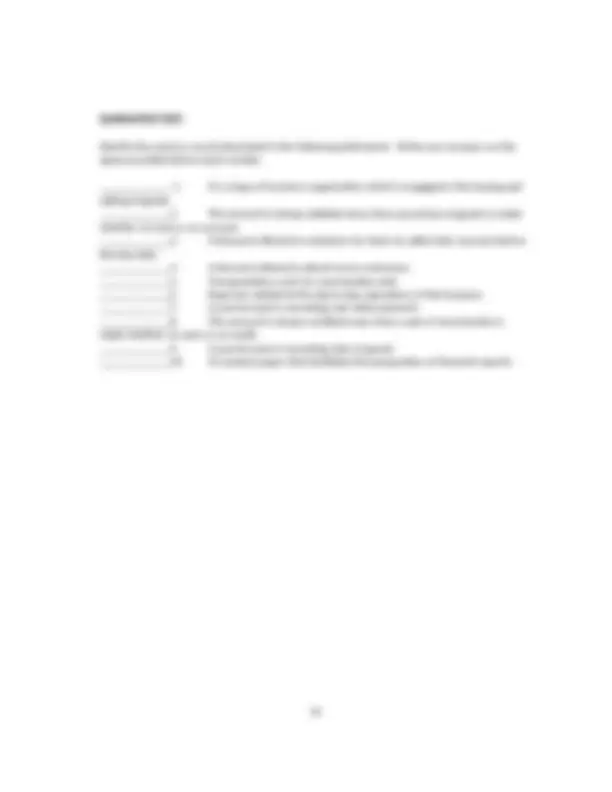


Study with the several resources on Docsity

Earn points by helping other students or get them with a premium plan


Prepare for your exams
Study with the several resources on Docsity

Earn points to download
Earn points by helping other students or get them with a premium plan
Community
Ask the community for help and clear up your study doubts
Discover the best universities in your country according to Docsity users
Free resources
Download our free guides on studying techniques, anxiety management strategies, and thesis advice from Docsity tutors
It is all about running own company
Typology: Study notes
1 / 79

This page cannot be seen from the preview
Don't miss anything!








































































Course Outline in PASC 103 (Basic Accounting) COURSE DESCRIPTION: This is an introductory course in accounting that deals with the nature, functions and scope of the accounting discipline affecting a service concern and merchandising enterprise organized as a sole proprietorship. Emphasis is on the basic accounting processes and principles in providing the students with adequate knowledge in the recording, classifying and summarizing phases of accounting. COURSE OBJECTIVES: Upon completion of the course, the students should be able to:
Accounting is useful because it tries to analyze and solve financial and economic problems which affect everyone – husband, wife, student, employee and businessman. An understanding of accounting is needed for one to be able to manage financial resources, be it money or property. Every business executive and business owner needs good financial information to be able to make good decisions in running the affairs of the business. Large, small or medium business organizations use accounting information to make decisions. Even the government and non-profit organizations also need accounting information as the basis for making decisions. After reading Module 1, you will learn to: Define accounting and appreciate its role in business. Know what an accounting system is and the accounting reports it generate. Identify the forms of business organizations and types of operations. Define and identify the accounting elements. Use the accounting equation to analyze business transactions.
Accounting information system involves a systematic or orderly way of measuring business transactions through a process of recording, classifying and summarizing, and from which process reports are generated for proper communication to decision makers. Accounting Process PHASE 1 FUNCTIONS OF ACCOUNTING:
Analyzed Measured Recorded Classified Stored Decision Making Summarized Reported Interpreted Data Gathered
TRANSACTION – the exchange of goods or services for a certain value. It is also defined as any financial event that changes the resources of the business. A transaction has two fold effect, value received and value parted with. ILLUSTRATION: Transaction Value Received Value Parted With
Advantages:
Lesson 3 ACCOUNTING RELATIONSHIPS ELEMENTS OF ACCOUNTING There are five accounting elements namely: Assets, Liabilities, Capital, Revenue and Expenses. ASSETS are resources owned by the business. They are properties and rights owned by the business. Two major classifications of Assets: Current Assets and Non-current Assets.
1. Current Assets – assets which can be converted into cash within one year. Common examples include the following: cash, marketable securities, receivables, inventories, and prepaid expenses. 2. Non-current assets – include tangible, intangible, operating and financial assets of long- term nature. a. Fixed Assets – known as Property, Plant and Equipment. Examples are: Land, Building, Machinery, Furniture and Fixture, Office Equipment, Store Equipment and Delivery Equipment. b. Long-term Investments – assets held by the enterprise for the accretion of wealth through distribution such as interest, royalties, dividends and rentals for capital appreciation or for other benefits. Examples are: Investment in stocks, Investment in Bonds and Fund for noncurrent purposes. c. Intangible Assets – identifiable nonmonetary assets without physical substance. Examples are: patent, copyright, trademark, franchise and goodwill. d. Other Non-current Assets – include other long-term items which cannot be appropriately classified under the usual asset categories. LIABILITIES are financial obligations of the business. It has two major classifications: Current Liabilities and Long-term Liabilities. 1. Current Liabilities – obligations which are to be settled within one year like Accounts Payable, Notes Payable, Unearned Revenues and Accrued Expenses. 2. Non- current Liabilities – all other liabilities like Long-term Notes Payable, Bonds Payable and Mortgage Payable.
Nine possible two-fold effects:
July 16 – Paid the bill of Bombo Radio. The payment of obligation decreases an Asset(Cash) and decreases a Liability (Accounts Payable). June 19 – Billed Erika for computer services rendered, Php 5,000. Since the revenue is earned on June 19, a bill is sent to the client and the transaction is recorded on the same date not on the date when the client would pay. This revenue transaction, increase an Assets(Accounts Receivable) for Php5,000 and it has also an effect of increasing Capital (Arsen, Capital). Learning Activity: A. State whether each of the following is an asset, liability, or capital. If asset or liability, state the kind: Example: Cash on Hand Asset Current
C. State the effects of the following transactions on the assets, liabilities, and capital by placing a plus (+) sign and a minus (-) sign on the spaces provided for. Transactions Assets Liabilities Capital
Use of T-Accounts The simplest form of the account is known as the “T” account because of its similarity to the big letter “T”. The Account is an accounting device used to record increases and decreases in the different elements of accounting caused by the business transactions that have transpired. The account is illustrated below: Account Title
Left side or I Right side or Debit side I Credit side I An account is debited when an amount is entered on the left side of the account and credited when an amount is entered on the right side. It is a simple, direct means of recording transactions. Rules on DEBIT and CREDIT DEBIT TO: CREDIT TO:
Accounting is a service activity, which measures, records and reports information, about the economic activities and condition of a business, to be used in making decisions. Business activities are recorded in the books of accounts. From these records, reports and statements showing the progress and status of the business are prepared periodically. These reports are indispensable in planning as well as in making decisions. There are four functions of accounting, namely: recording, classifying, summarizing and interpreting. There are also two broad classification of business organization: as to ownership (sole, partnership and corporation) and as to nature of business (service, merchandising and manufacturing). The elements of accounting are: assets, liabilities and capital. The relationship of these elements could be expressed in an accounting equation: A = L + C. This means that the total assets of the business are divided into the equity of the creditors and the equity of the owner. The present accounting system follows the double-entry bookkeeping which is founded on the concept of value received and value parted with. It is a system in which transaction has dual effect on the accounting elements. It is based on the hypothesis: “Value of Economic Resources equals Value of Rights on the Economic Resources. The Account is an accounting device used to record increases and decreases in the different elements of accounting caused by the business transactions that have transpired. An account is debited when an amount is entered on the left side of the account and credited when an amount is entered on the right side. Normally, assets have a debit balance while liabilities and capital have credit balances. SUMMATIVE TEST Let us find out how well you understood the module. Your score to the self-test will determine if you are ready to go to the next module. GOOD LUCK!!! TEST I: TRUE OR FALSE: Write true if the statement is correct and false if it is wrong. Write your answers on the space provided before each number. ___________ 1. Accounting is the language of business. ___________ 2. Bookkeeping is the same as recording. ____________ 3. A sole proprietorship can have more than on owner. ____________ 4. The basic accounting device is the accounting equation.
____________ 5. A debit entry always decreases the balance of an account. ____________ 6. For every transaction, there is at least one account affected. ___________ 7. The journal is called the book of original entry. ___________ 8. Income increases owner’s equity, therefore it is recorded as debit. ___________ 9. Assets are properties owned by the business. ___________ 10. Expenses decreases owner’s equity. TEST II: IDENTIFICATION : Identify the word/s described in the following statements: Write your answers on the space provided before each number. __________ 1. The systematic and chronological recording of business transactions and events. __________ 2. It is owned by two or more individuals. __________ 3. These are financial obligations of the business. __________ 4. Skeletal form of a ledger. __________ 5. Left side of a “T” account. __________ 6. A type of business organization which is engaged in the selling of goods. __________ 7. A person who is concerned with the ability of the borrower to pay not only the principal debt but also the interest. __________ 8. It is a statement of financial condition of the business. __________ 9. It is the exchange of goods or services for a certain sum of money. __________ 10. Assets which can be turned into cash for a short period of time usually on year.